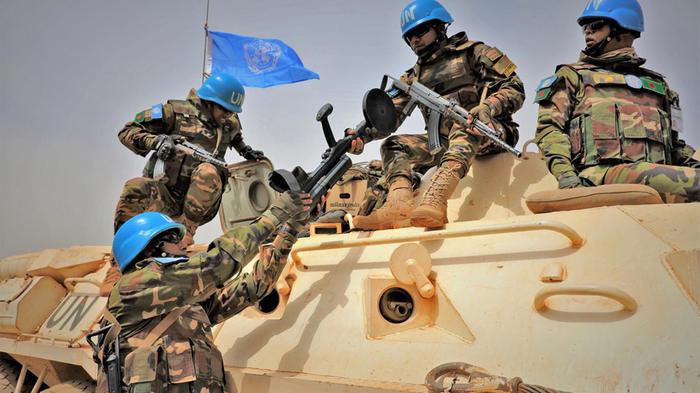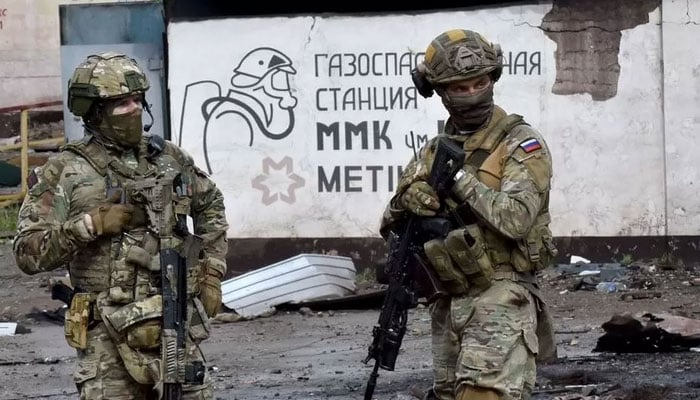
Charli Carpenter
For better or worse, the United States military is leaving Afghanistan. Proponents for withdrawal argue the U.S. has done all it can militarily in the country, has more pressing security interests elsewhere and may do more harm than good by staying. Critics say the power vacuum the U.S. is leaving behind will reignite a civil war and open the door to ethnic cleansing, gender apartheid and state failure.
Both views have merit, but the choice is not between these options alone. Yes, the U.S. record of nation-building in Afghanistan is poor. And yes, power vacuums and state fragility breed insurgencies, instability and transnational crime. What is needed now is not a further prolonged U.S. military presence or, alternatively, the military equivalent of a concert of external powers in Afghanistan. Instead, what’s needed is the steadying hand of a robust international peacekeeping, peacebuilding and peace-enforcement mission under United Nations auspices. The U.S. should contribute to this mission, to be sure, but the reins must be surrendered to the international community.
Peacekeeping involves the insertion of a multilateral force with the consent of both parties to a civil war, mandated to provide security, enforce the peace and protect civilians as a nation rebuilds itself post-conflict. Often undertaken in conjunction with a wider peacebuilding effort involving U.N. civilian agencies and nongovernmental organizations, peacekeeping itself involves the use of force only in self-defense or in defense of civilians. Unlike a counterinsurgency mission, which is aligned with the host government, U.N. peacekeepers remain politically neutral. They are committed only to the protection of civilians from both warring parties and undertake violence only in defense of those civilians or of the peacekeepers themselves. Meanwhile, they serve an important function in observing the peace process, thus enabling warring parties to overcome information gaps and commitment problems.
Unlike U.S. nation-building or counterinsurgency efforts, U.N. peacekeeping missions work. Virginia Page Fortna, a professor at Columbia University, has studied 47 peace missions in the context of 115 periods of peace following conflict and found peace lasts longer with the presence of a U.N. peace mission. According to political scientists Hanne Fjelde, Lisa Hultman and Desiree Nilsson of Uppsala University, peacekeeping missions also do a better job of reducing violence against civilians than 20 years of counterterror operations have done in Central Asia. Because a broader range of nations shoulder the burden of contributing and rotating troops, peacekeeping missions can also have greater staying power.
Lise Howard, a professor at Georgetown University, has argued that peacekeeping is more successful than counterinsurgency because of how peacekeepers get the warring parties to change their behavior—above all to stop fighting. Rather than using compellent force against rebels, as counterinsurgents do, peacekeepers influence both sides of a conflict. They do so in three ways: verbal persuasion, financial inducements and coercion short of offensive military force, including surveillance and arrest. Coupled with other forms of international involvement—such as parallel peacebuilding missions led by civilian human rights, humanitarian and development agencies and NGOs—peacekeepers can contribute to a sense of sustainable security in post-conflict societies, thereby creating the conditions for peace.
Crucially, peacekeepers also help address the dynamics that impede peace agreements or cause them to fail. Barbara Walter, from the University of California-San Diego has long pointed out that civil war termination suffers from two serious bargaining problems: information asymmetries, because parties are motivated to misrepresent their capacities, and difficulty in credibly committing to settlements, when parties have previously defected from agreements. Elizabeth Menninga and Alyssa Prorok’s analysis of multiple conflicts in Africa shows that third-party involvement is key to resolving these kinds of information and commitment problems.
In a recent paper in the Journal of Indo-Pacific Affairs, Maj. Ryan C. Van Wie of the U.S. Army argued that a U.N. peacekeeping mission in Afghanistan could resolve similar problems currently hindering an inter-Afghan settlement, by providing the parties with a needed impartial intermediary to monitor compliance and de-escalate disputes, thereby helping to build trust. As A. Walter Dorn has argued, such a mission could draw and build on indigenous Afghan forms of conflict resolution, thus splintering the insurgency and bringing multiple parties to the table.
In comparison to U.S. counterinsurgency or nation-building missions, U.N. peacekeepers may also seem more legitimate to combatants because they represent the international community rather than just hated Western powers. The forces making up peacekeeper missions come from all over the world, but many major troop-contributing countries are from the Global South, and the troop composition for a specific mission can be tailored to local cultural dynamics. A mission to Afghanistan, for example, might include a preponderance of forces from Muslim-majority countries like Bangladesh, making it less reminiscent of Western imperialism.
U.N. missions are not without their own flaws, of course. As Columbia University’s Severine Autesserre shows in her book “Peaceland,” they can create islands of internationalism surrounded by seas of local discord, walling themselves off from the societies they serve and devaluing local expertise and ways of knowing through their everyday habits. The infusion of expatriate wealth into a post-conflict economy can create opportunities for employment, education and internationalization, but it can also create power imbalances and resentment. These are manageable problems, though, and over time the U.N. system is improving its responses to them. Moreover, they are a small price to pay for the benefits a peace mission offers: confidence-building, monitoring, civilian protection, police training, education and the development of a culture of human rights.
So why isn’t there already a U.N. peacekeeping mission in Afghanistan? Some would say there is and has been—the United Nations Assistance Mission in Afghanistan, or UNAMA. But it’s not a true peacekeeping mission, because it lacks peacekeepers. UNAMA is a small political office that does some human rights advocacy, but it is not a police or military force, and it is poorly staffed and under-resourced even for what it currently does. What distinguishes peacekeepers from other civilian U.N. missions is the force of arms, held in check, but there and ready to be used against either party if need be. Peacekeepers provide the capacity to protect civilians from incursions in a neutral manner and to respond as needed to security threats. An office like UNAMA would work best if supported by a peacekeeping or peace-enforcement mission as well as a wider international infrastructure for peacebuilding.
To be effective, such a mission would need sufficient troops. Van Wie suggests at least 5,000, with a battalion based in Kabul and regiments in three other major cities. But he adds that a 25,000-troop mission with coverage over the whole country would have the highest likelihood of success. It would also need a robust mandate—the single best predictor of mission success according to University of Ohio political scientist and former peacekeeper Kofi Nsia-Pepra. Also, it would need money. Van Wie’s various proposals would cost between $500 million and $2 billion annually, but this is pennies compared to the annual cost of the U.S. military engagement.
Importantly, because peacekeeping relies on the consent of those whose peace is being kept, both the Afghan government and the Taliban would need to agree to invite the U.N. to deploy the mission. While this may seem far-fetched, recall that the Taliban’s opposition to foreign troops is largely directed at perceived “Western invaders.” There are some indications that the group could feel differently about a Muslim-majority international force there with their negotiated consent.
To turn this from idea to reality, however, before even beginning to negotiate consent from the parties, the Security Council would need to initially agree to establish and fund such a mission. As a permanent member of the council, the U.S. can lay the foundation for doing so. This is also an opportunity for the Biden administration to reverse the Trump-era gutting of the U.N. peacekeeping budget with an infusion of funds earmarked for an Afghanistan mission.
Such efforts may have outsized value not only in keeping the peace, but in making peace possible. And the U.S. stepping back its own military involvement in Afghanistan has finally provided an opening for that to happen.


